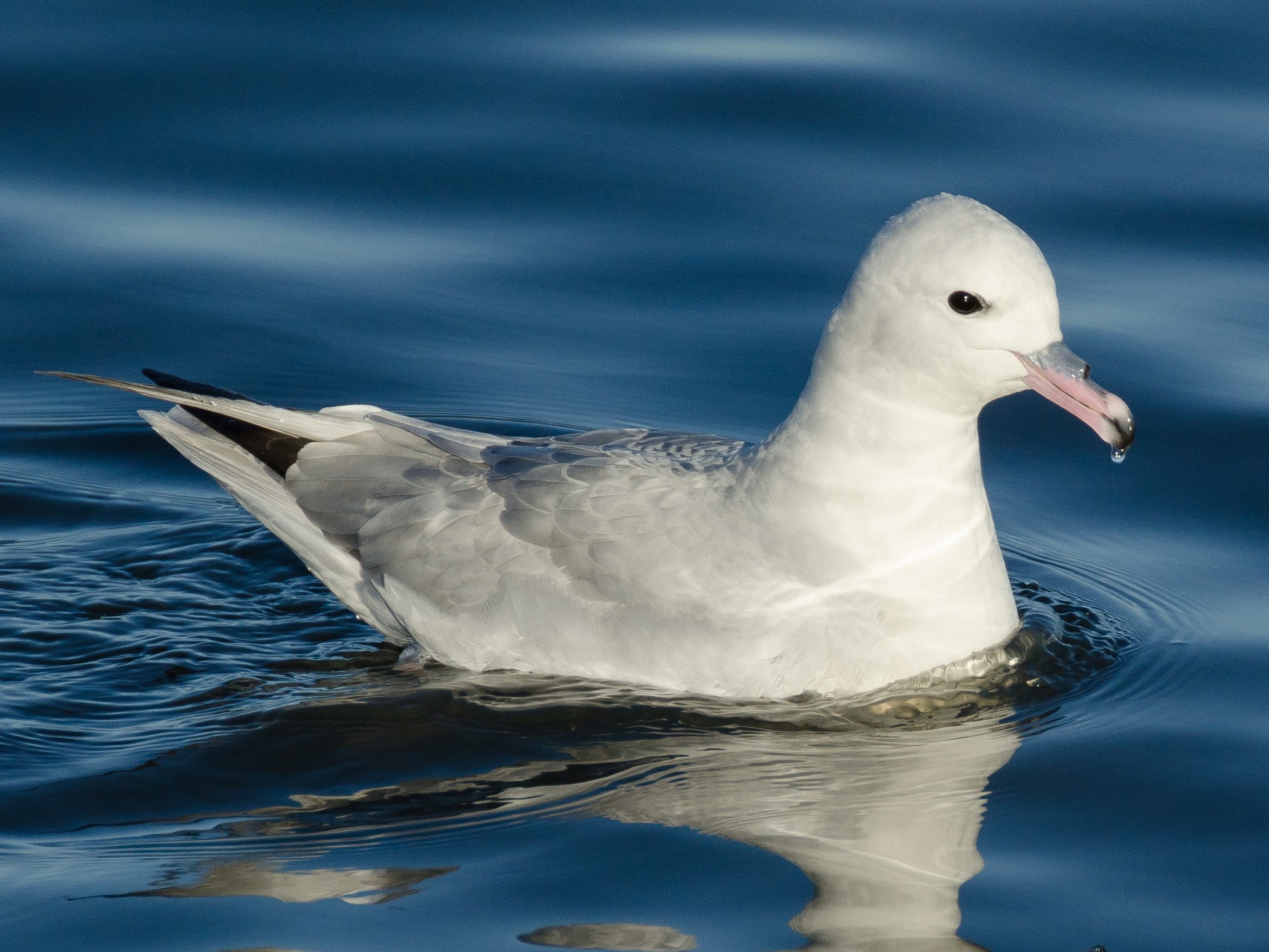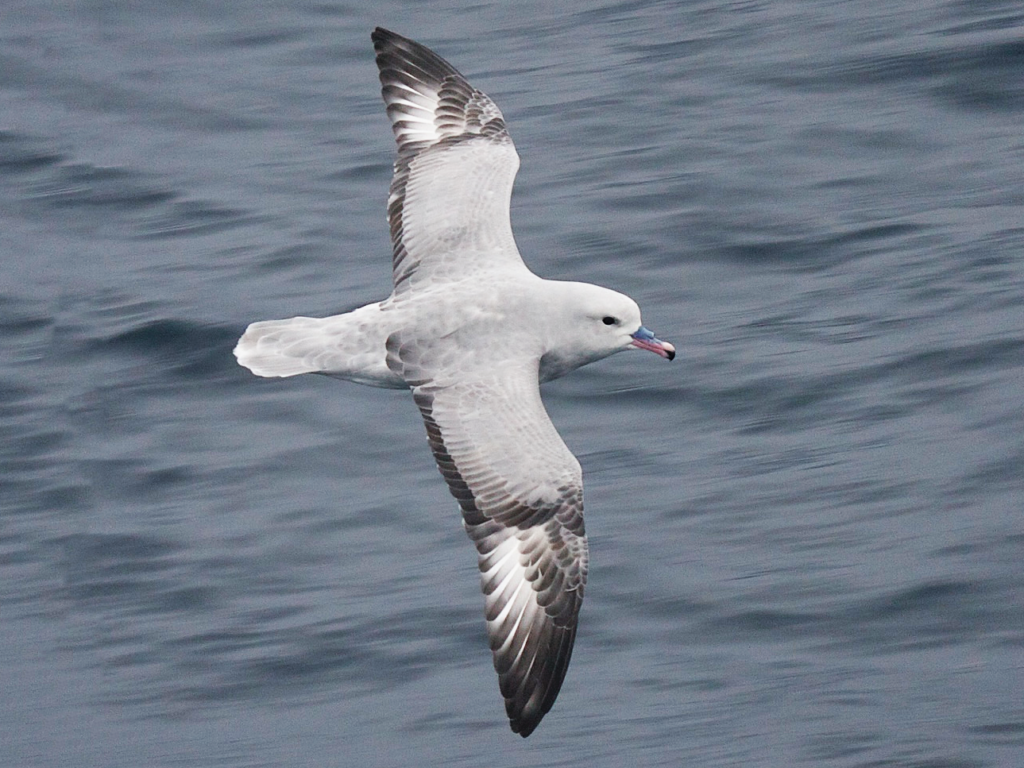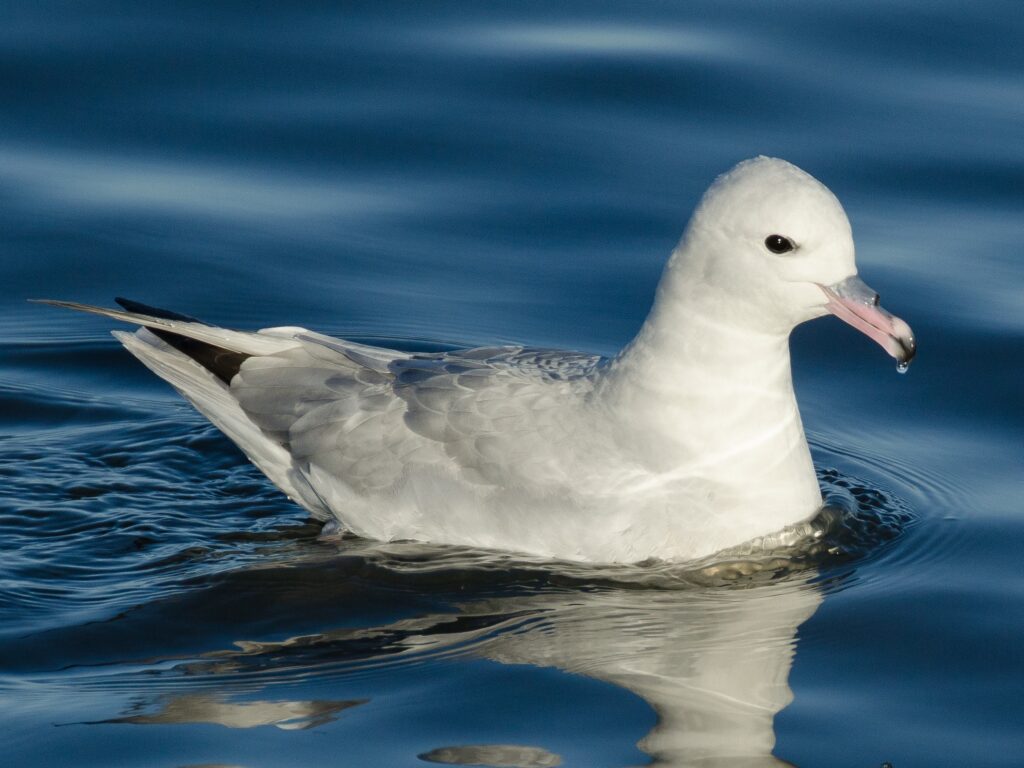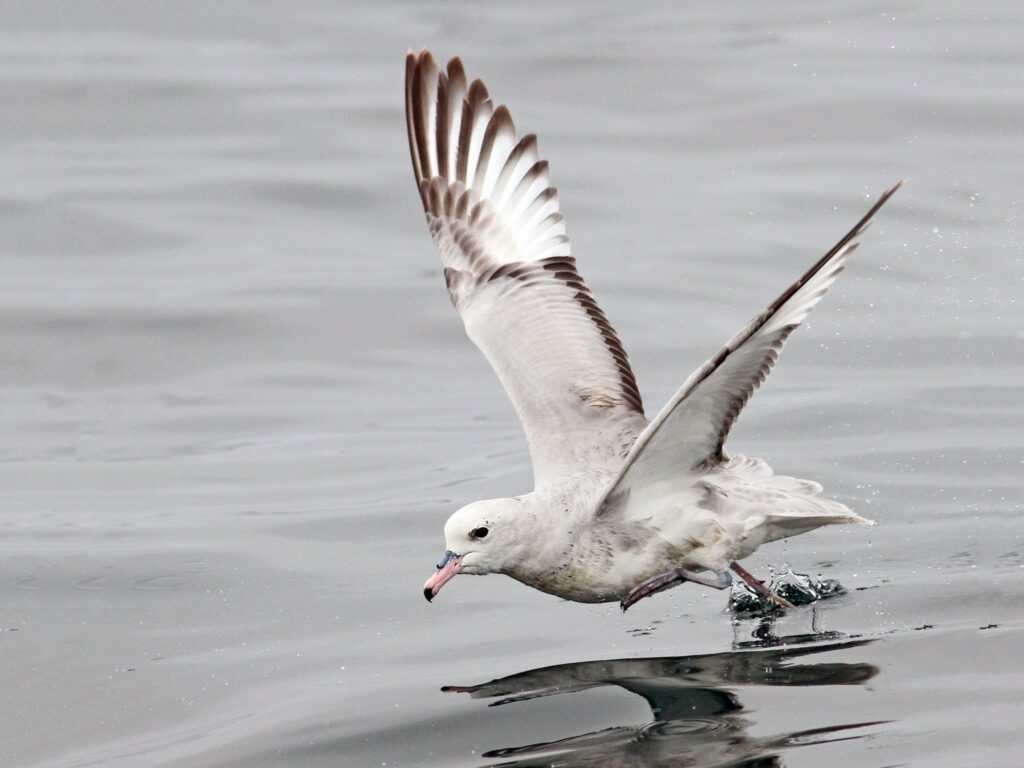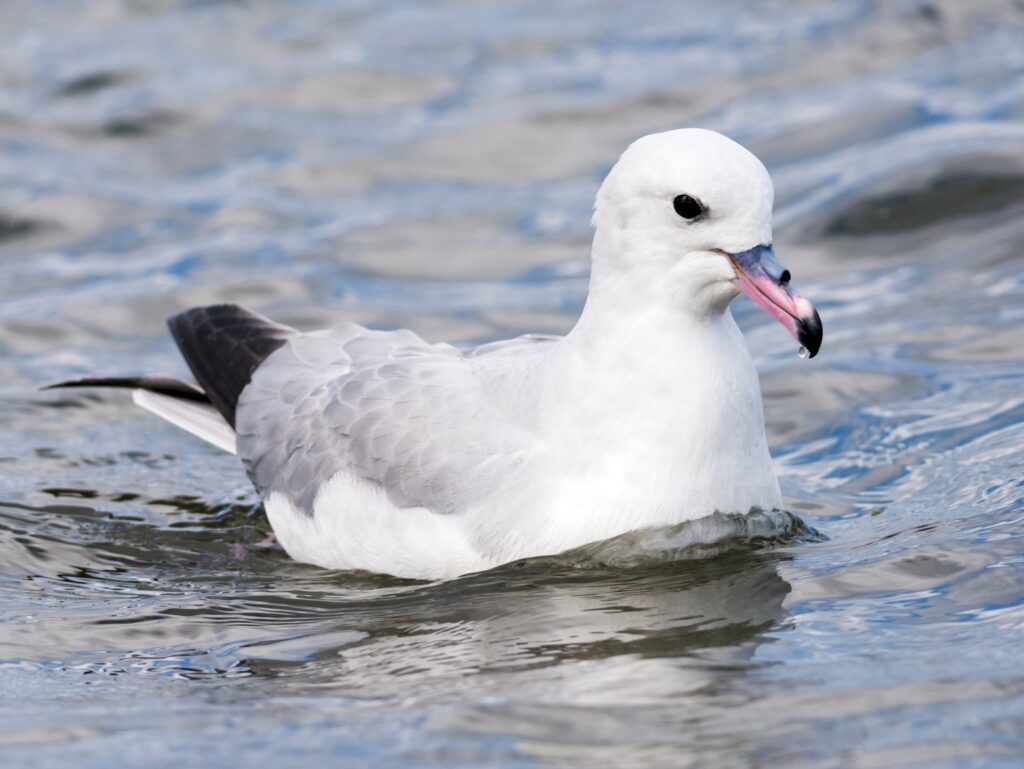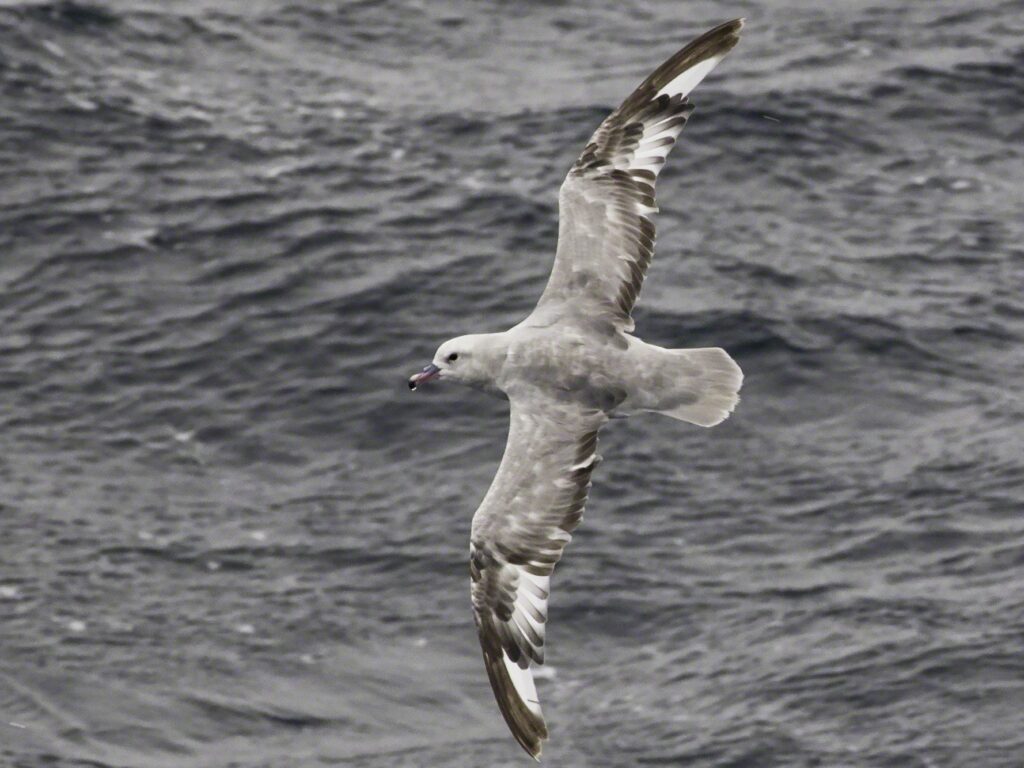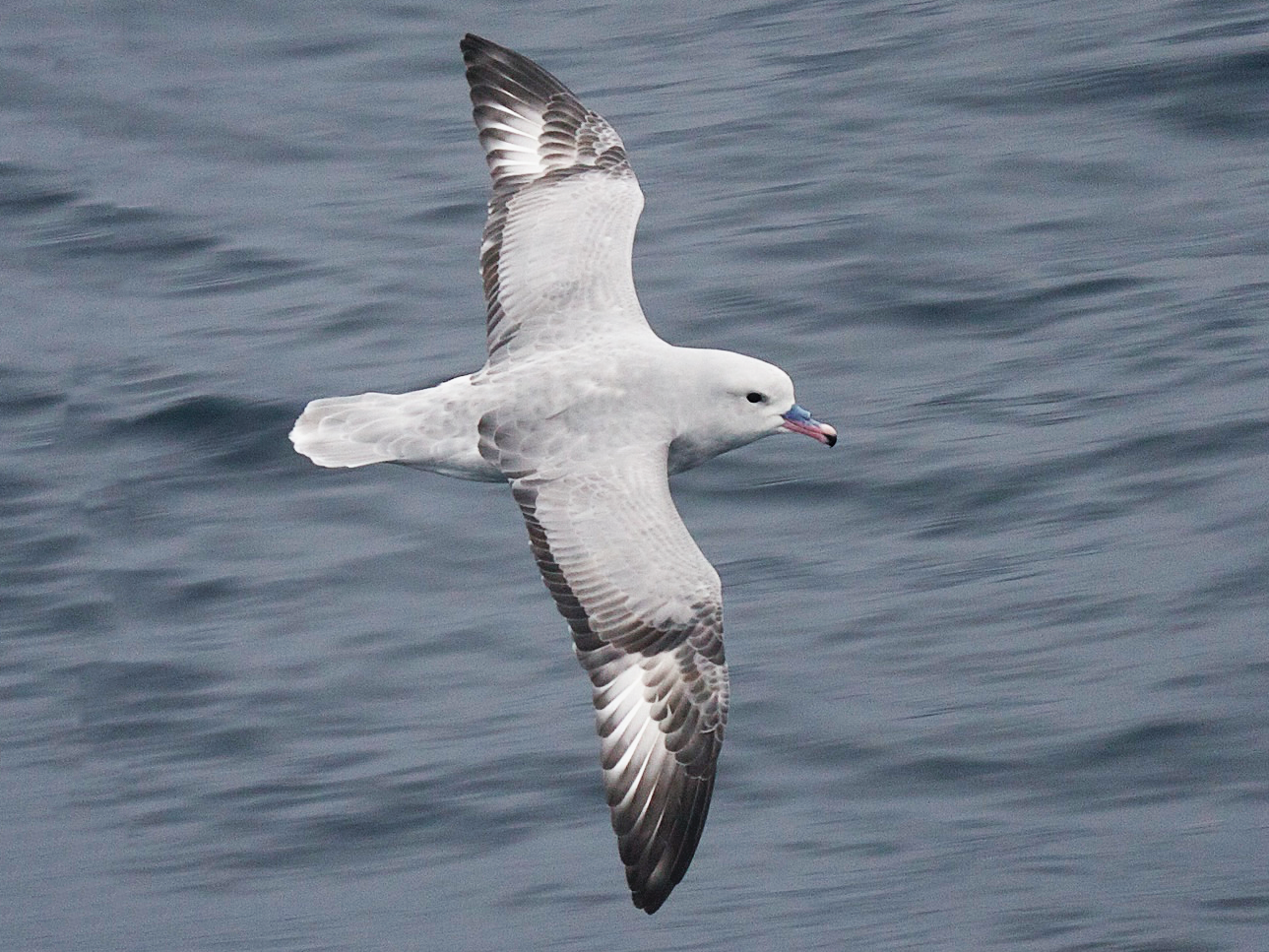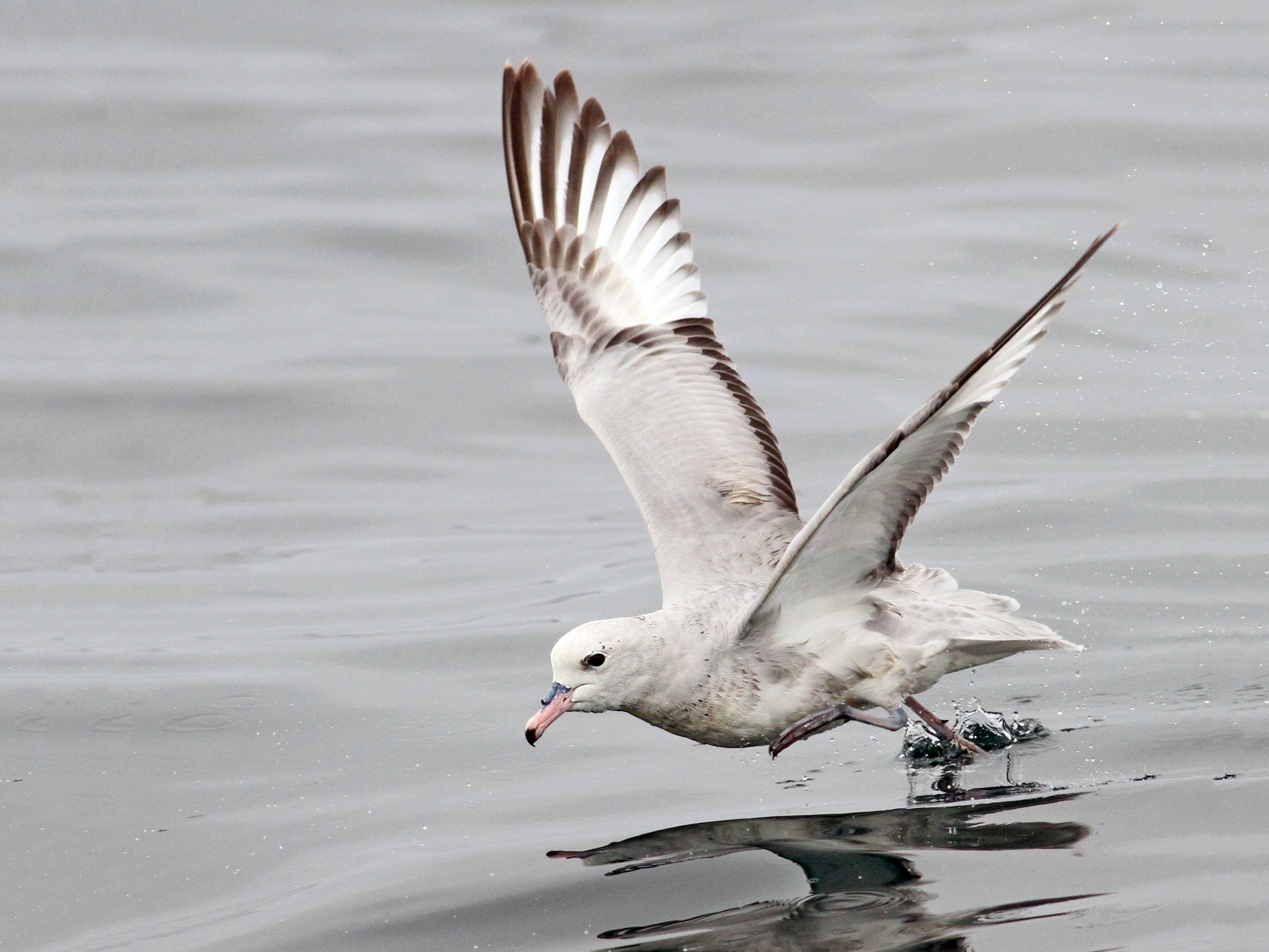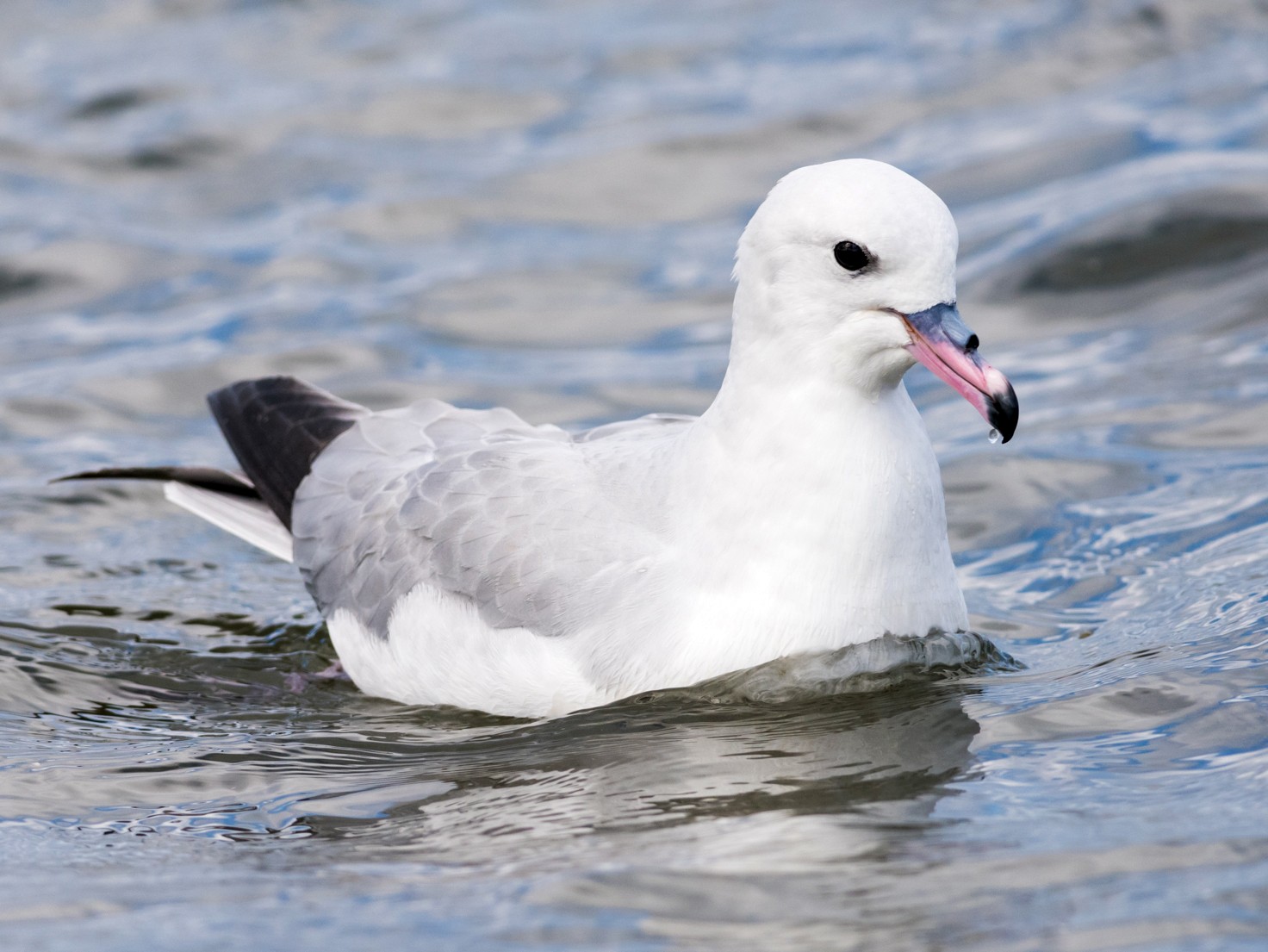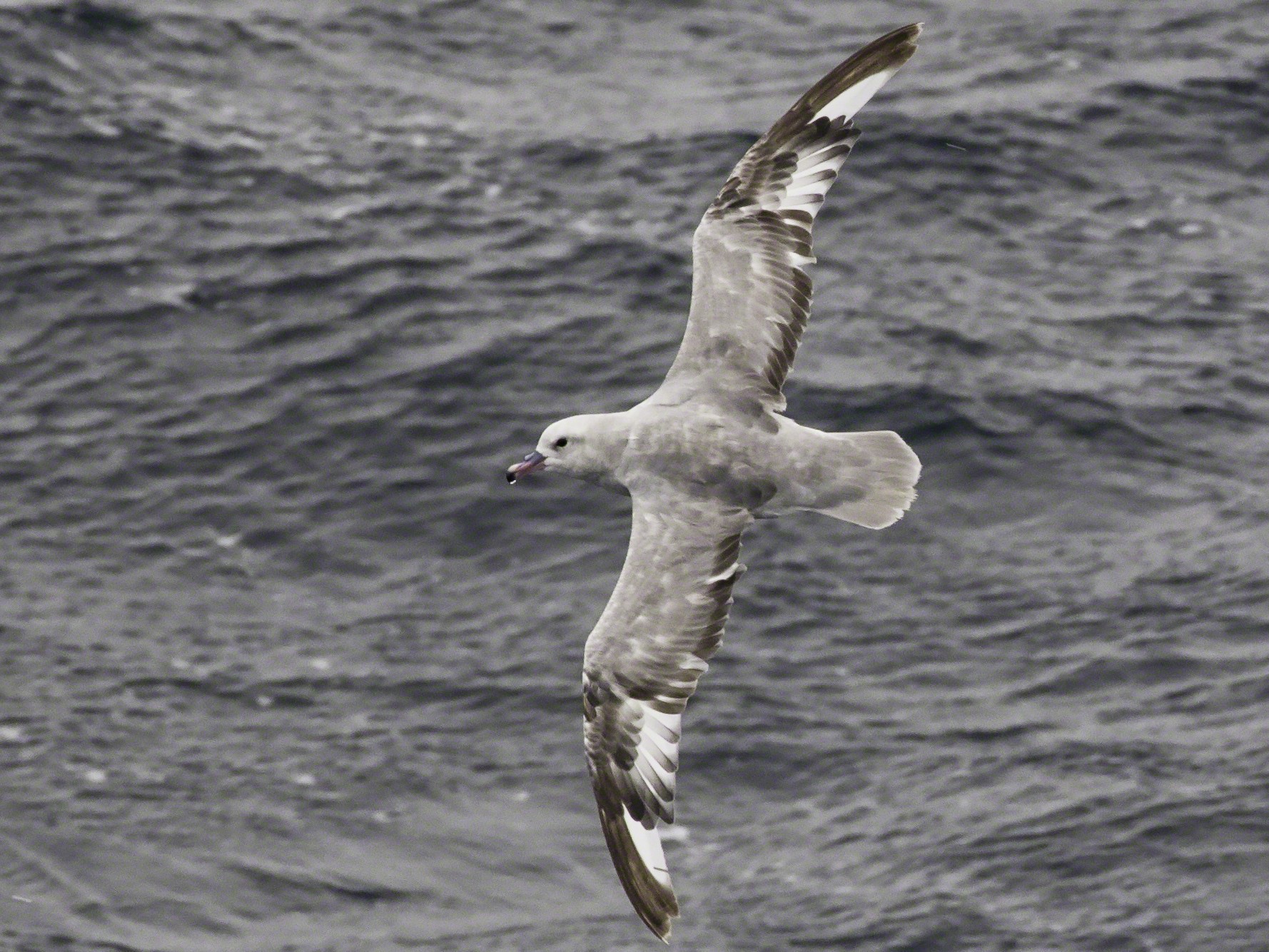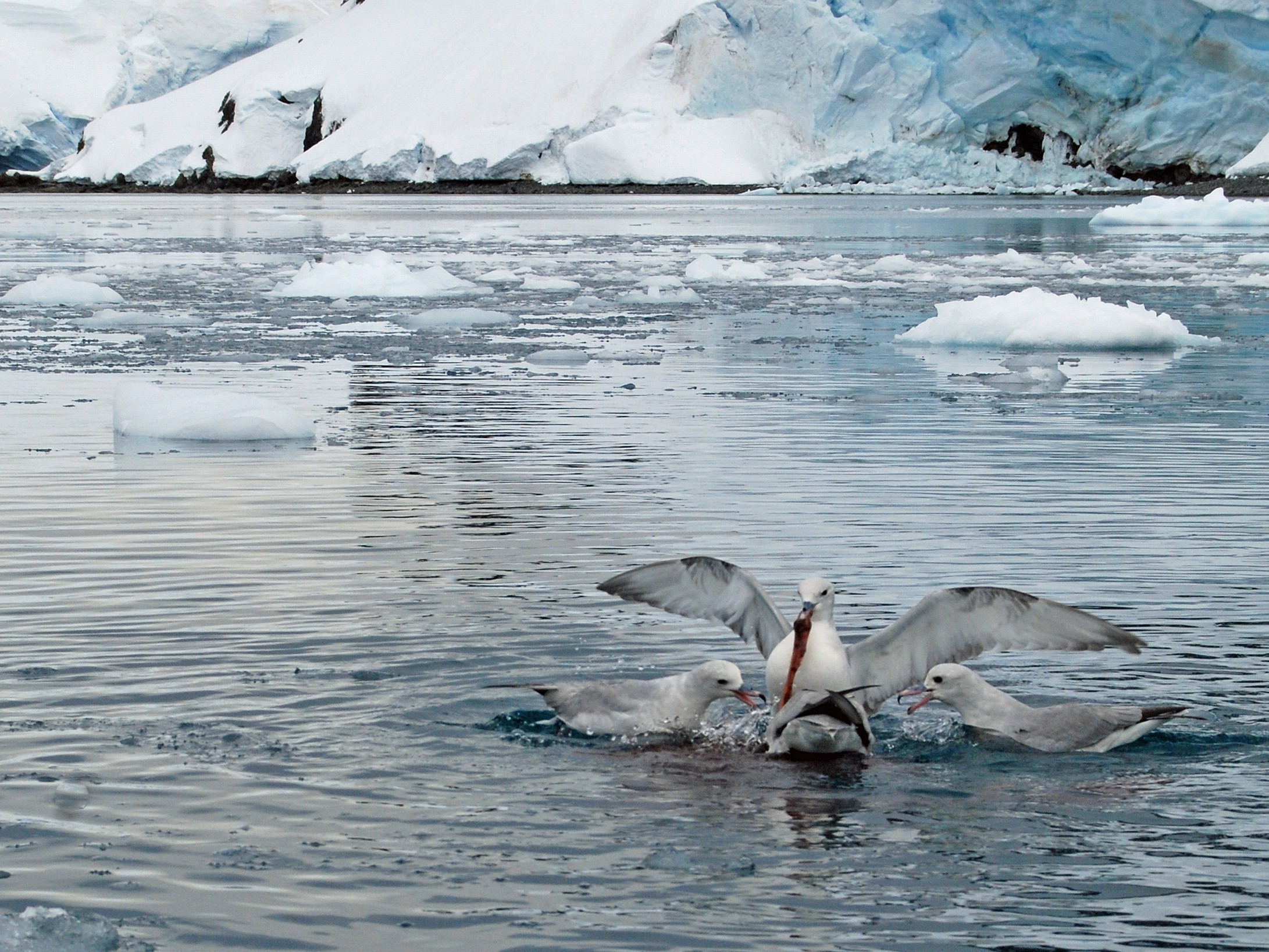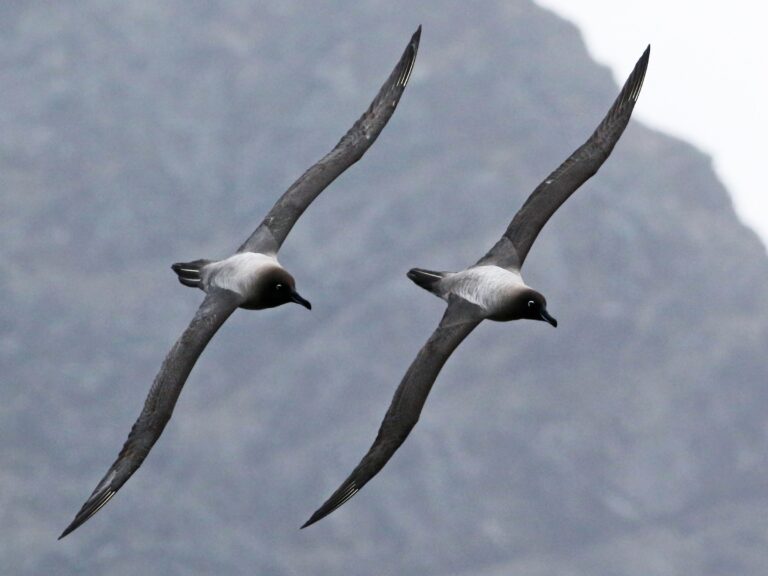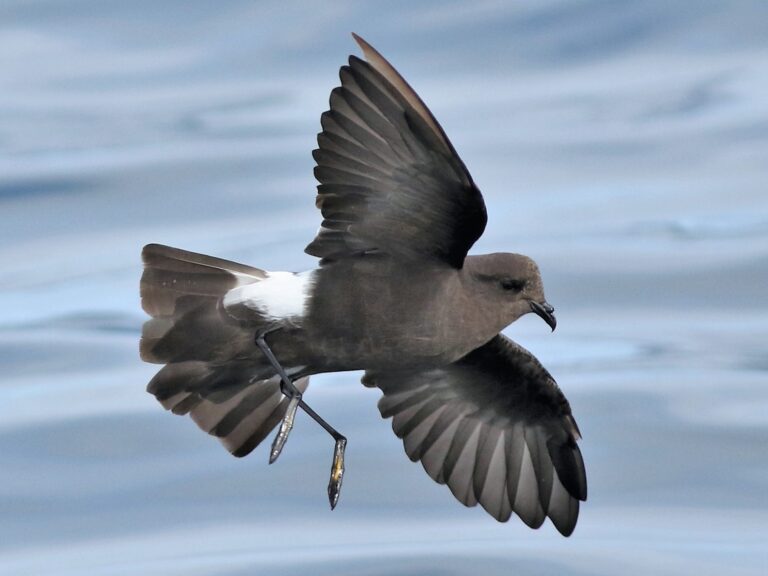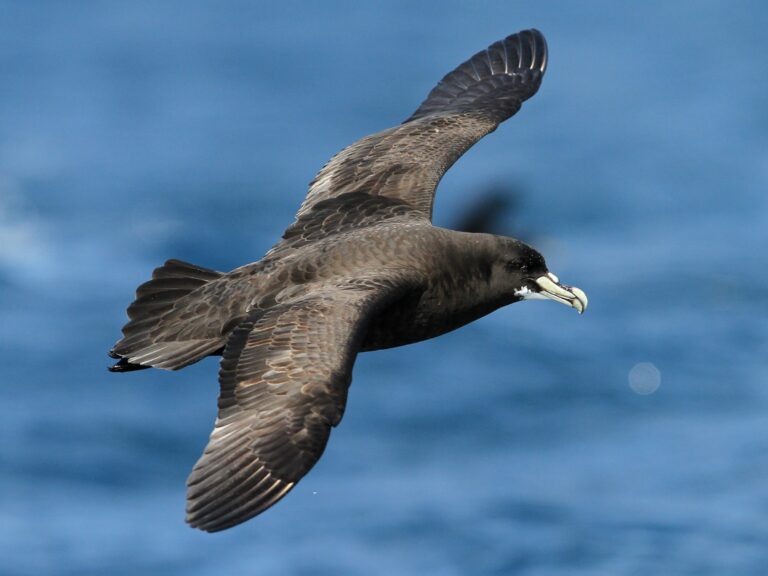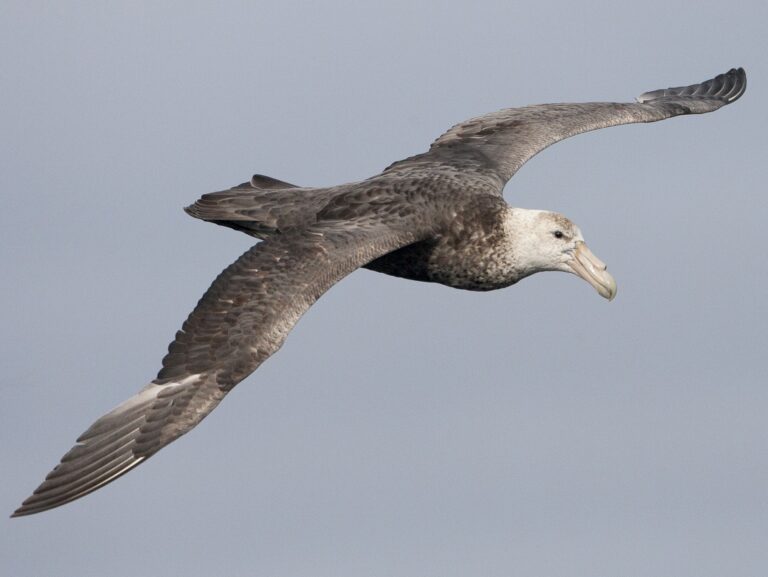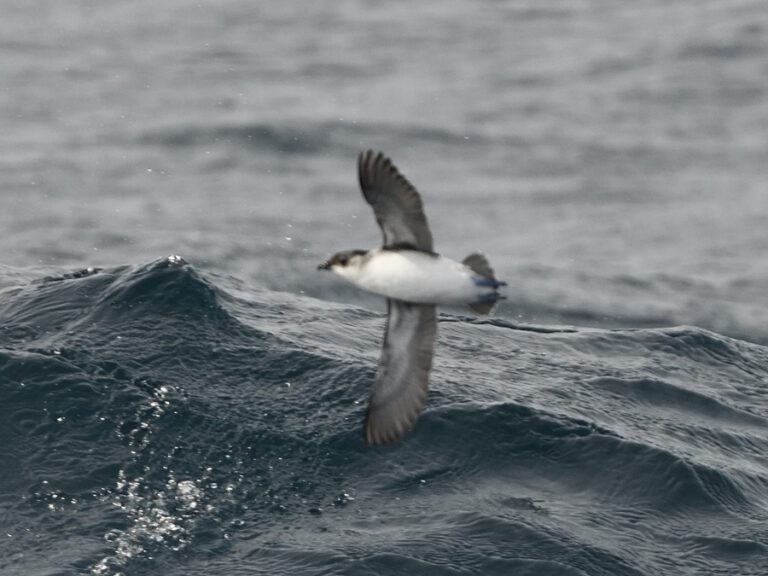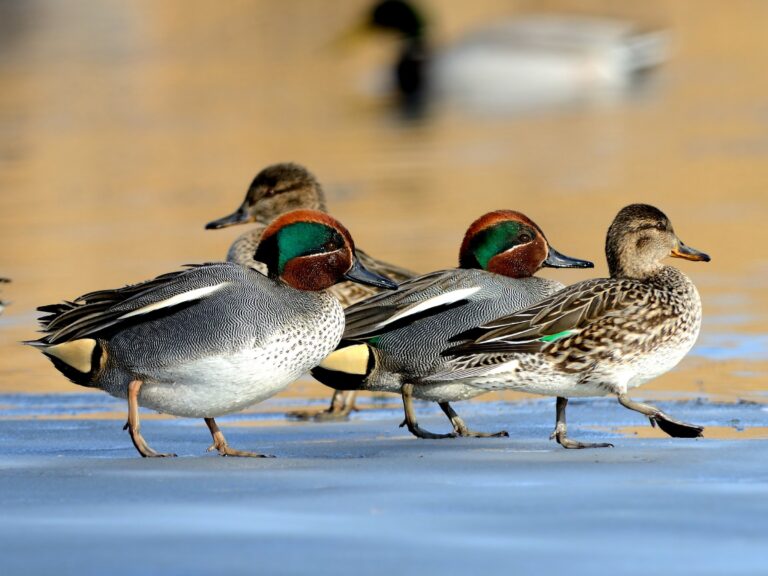Southern Fulmar: Adaptations and Habitat Insights
The Southern Fulmar, known scientifically as Fulmarus glacialoides, is a remarkable bird species found predominantly in Antarctic regions.
This seabird is highly adaptable, thriving in various marine environments while showcasing some fascinating feeding and breeding behaviors.
Observing this bird provides insights into the delicate balance of life in some of the planet’s most extreme habitats.
With a sturdy body and unique plumage, the Southern Fulmar has physical traits that enable it to maneuver effectively in strong winds over the ocean.
Its diet mainly consists of fish and plankton, which it skillfully catches while gliding over the water’s surface.
Furthermore, their breeding habits reflect their resilience, as they mate for life and return to the same nesting sites year after year.
Key Takeaways
- The Southern Fulmar is an adaptable seabird mainly found in Antarctica.
- It has unique feeding behaviors, primarily consuming fish and plankton.
- Conservation efforts are essential to protect this bird from climate change effects.
Taxonomy and Classification
This bird belongs to a well-defined classification system that places it within a larger context of bird families and orders.
Procellariiformes Order
This species is part of the Procellariiformes order, which is commonly known as the tubenoses.
This order includes several families of seabirds that are adapted for life at sea. Characteristics of these birds include a long, narrow wing shape and a spectacular ability to glide over ocean waves.
Members of Procellariiformes are often distinguished by their specialized nostrils, which help them smell food even from great distances.
This order includes various species, such as albatrosses, petrels, and shearwaters. Fulmars are among the different families that fall under this order.
Procellariidae Family
Within the Procellariiformes order, the Southern Fulmar is categorized under the Procellariidae family.
This family includes fulmars and other petrels. Birds in this family are known for their robust bodies and characteristic tube-like nostrils.
Procellariidae members are typically skilled fliers, able to cover vast distances in search of food.
The Southern Fulmar has specific adaptations for this lifestyle, including a diet that consists mainly of fish, squid, and plankton.
Genus Fulmarus
This species belongs to the Genus Fulmarus. This genus includes several species, with the Southern and Northern Fulmar being the most recognized.
These birds are similar in appearance, with their stout bodies and distinctive plumage that can range from pale to darker shades.
Fulmarus species have been instrumental in studying seabird ecology due to their wide distribution and adaptability.
Physical Characteristics
The Southern Fulmar has unique physical traits that help it thrive in various marine environments. Understanding these characteristics provides insight into how this bird adapts and survives.
Size and Weight
The Southern Fulmar typically measures between 18 to 20 inches in length. Its wingspan can reach up to 42 inches, allowing for efficient gliding over ocean surfaces. This species usually weighs between 1.5 to 2.5 pounds.
The size varies slightly depending on the individual’s age and specific location.
Larger females tend to be heavier than males. This size advantage enables them to store more fat, which is crucial during long flights and breeding seasons.
Coloration
The plumage of the Southern Fulmar is predominantly a silver-grey. The upperparts are a mix of grey and white, while the underparts feature a cleaner white appearance. This coloration helps with camouflage against the sky when viewed from below.
The head often shows a subtle bluish-grey hue. Young Southern Fulmars may have a darker appearance before their adult plumage develops.
This transition typically occurs after a couple of years, making identification easier as they mature.
Stiff Wings Adaptation
The Southern Fulmar possesses stiff wings, which are adapted for dynamic soaring. This design minimizes wing flapping while allowing for long-distance flight.
The stiffened structure helps it glide effortlessly over ocean waves, conserving energy during flight.
These wings can reduce turbulence and improve stability in varying weather conditions. This adaptation is crucial for survival, especially in vast and often turbulent marine environments.
Habitat and Distribution
This bird is primarily found in the Antarctic region and surrounding waters. Its habitat preferences reflect its adaptation to cold oceanic zones, mainly characterized by pack ice and rich marine environments.
Antarctic Environment
The Southern Fulmar thrives in the frigid waters of Antarctica.
This area provides important breeding and foraging habitats.
During the breeding season, the fulmars nest on rocky cliffs, often near pack ice. These locations offer safety from predators.
The cold temperatures and abundant food supply from krill and fish support their breeding success. Environmental conditions such as ice formation are crucial for their survival, as they influence prey availability.
Pelagic Nature
As a pelagic bird, the Southern Fulmar spends much of its life in the open ocean.
It often forages over the waters of the Southern Ocean. The bird is well adapted to these environments, using dynamic soaring techniques to glide efficiently over ocean waves.
Its diet consists mainly of fish and squid, which it catches while flying over the water.
Fulmars are also known to scavenge, feeding on carrion and waste from fishing activities. This scavenging behavior helps them make the most of the resources available in their vast hunting grounds.
This bird’s habitat extends well beyond Antarctica.
The Southern Fulmar’s habitat extends well beyond Antarctica.
It can be found around sub-Antarctic islands and even as far north as South Africa and New Zealand. In these regions, they also utilize rocky coastal areas for nesting.
Different oceanic conditions affect the locations where Southern Fulmars are found.
They prefer regions with nutrient-rich waters that support large fish populations. This influences their foraging habits and breeding patterns. Their flexibility in habitat use helps them adapt to changing environmental conditions.
Feeding Behavior
This species exhibits unique feeding habits and techniques that allow it to efficiently hunt and consume prey in its environment. This bird primarily feeds on fish and krill, employing specific strategies to secure its meals.
Dietary Habits
The diet of the Southern Fulmar consists mainly of small fish and krill.
These birds are opportunistic feeders, often consuming whatever is available in their habitat. They are known to eat items such as:
- Myctophid fish
- Krill
- Various crustaceans
Studies indicate that the dietary needs may change based on the breeding season and available resources.
During certain times, Southern Fulmars have been observed taking advantage of abundant fish schools, while at other times, they rely more on small crustaceans. The availability of prey significantly influences their foraging behavior.
Surface-Seizing Technique
This species is particularly skilled at surface-seizing. This technique allows the bird to capture prey that swims near the water’s surface. It employs the following methods:
- Dipping: The bird dips its beak into the water to catch small fish.
- Gliding: By gliding just above the water, it can quickly snap up krill and other surface-dwelling creatures.
This method not only conserves energy but also maximizes the chances of a successful catch. Southern Fulmars are proficient at navigating the waves, allowing them to spot and capture food efficiently. Their adaptations make them highly effective foragers in their marine environment.
Reproduction and Lifecycle
This bird has a unique reproductive cycle and specific nesting habits that are crucial to its survival. Understanding these aspects helps reveal how they adapt to their environment.
Breeding Cycle
The breeding cycle of the Southern Fulmar typically begins in late November. During this time, they establish monogamous pairs and engage in courtship behaviors.
Females usually lay one egg, which is incubated for about 50 to 55 days. Both parents take turns incubating the egg and caring for the chick.
Chicks fledge roughly 10 weeks after hatching.
It is essential for them to develop strength and skills to survive. The timing of breeding may vary based on environmental conditions, but the commitment to nurturing their young remains consistent.
Nesting Sites
Southern Fulmars prefer to nest on coastal cliffs, where the elevation protects them from land predators.
They often choose areas with gravel or rocky substrates. These locations are ideal for building sturdy nests that can withstand harsh weather conditions.
Nests are typically simple structures, primarily made of pebbles and vegetation.
Conservation Status
The conservation status of this species reflects various threats and the measures taken to protect it. Understanding these factors is essential for maintaining healthy populations.
Threats and Protection
Southern Fulmars face several threats that impact their populations. Major threats include climate change, which affects their breeding sites and food availability.
Changes in ocean temperatures can disrupt the distribution of prey, impacting feeding.
Pollution, especially plastic waste, poses a significant danger. Fulmars often ingest marine debris, leading to health issues or death. Additionally, fishing practices, such as bycatch, can further reduce their numbers.
To combat these threats, various protection efforts are in place. International agreements and conservation programs aim to safeguard their habitats and reduce pollution.
Awareness campaigns also help inform local communities about the importance of protecting the Southern Fulmar and its environment.
Frequently Asked Questions
This section addresses common questions about the Southern Fulmar. It explores various aspects of its size, breeding habits, sounds, and differences from other fulmars.
What is the typical size of a Southern Fulmar?
The Southern Fulmar typically measures about 45 to 50 centimeters in length. Its wingspan can reach around 110 to 120 centimeters. This size makes it a medium to large seabird compared to other seabirds.
How does the breeding season of the Southern Fulmar differ from other seabirds?
The breeding season for Southern Fulmars generally occurs from late spring to early summer. They typically nest on cliffs and rocky ledges. This is different from many other seabirds that may breed in different seasons or locations.
What sounds are characteristic of the Southern Fulmar?
Southern Fulmars produce a variety of sounds, including low grunts and harsh calls. These sounds are often used during courtship and territorial displays. Their vocalizations can vary depending on their mood and situation.
Can you distinguish between male and female Southern Fulmars by appearance?
It is difficult to visually distinguish male and female Southern Fulmars. Both sexes share similar plumage and size. However, males may be slightly larger, but this difference is not easily noticeable.
What are the main differences between Southern Fulmars and Northern Fulmars?
Southern Fulmars and Northern Fulmars differ mainly in their geographic distribution. Southern Fulmars are found in the Southern Hemisphere, while Northern Fulmars inhabit the Northern Hemisphere. Their feeding habits and preferred nesting habitats may also vary slightly.
How does the Southern Fulmar’s conservation status compare to other similar seabird species?
The Southern Fulmar is currently classified as a species of least concern regarding conservation status. However, it still faces threats such as habitat destruction and climate change.
Compared to other seabirds, its population is relatively stable.
